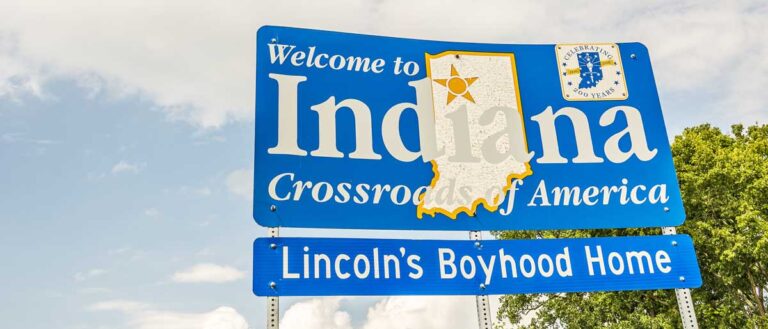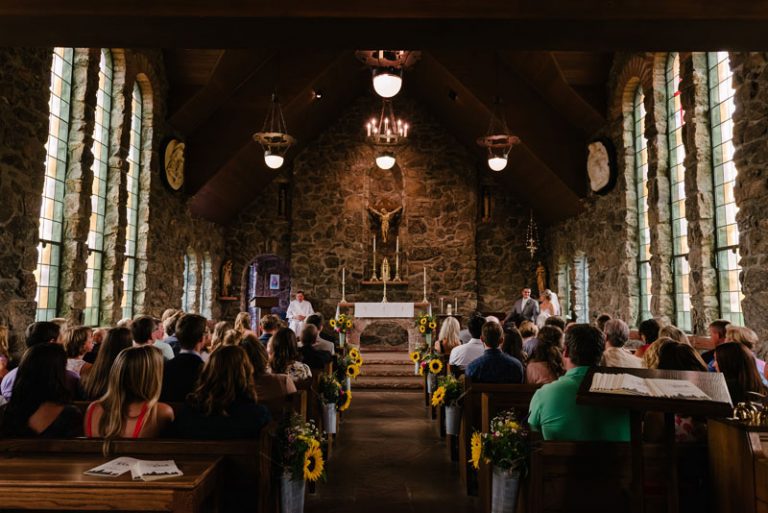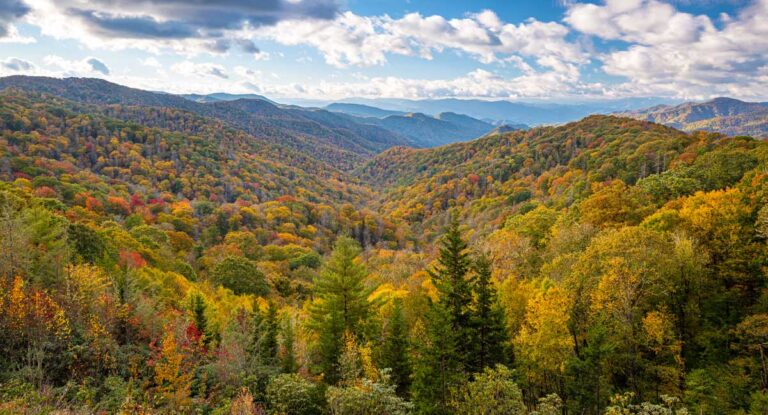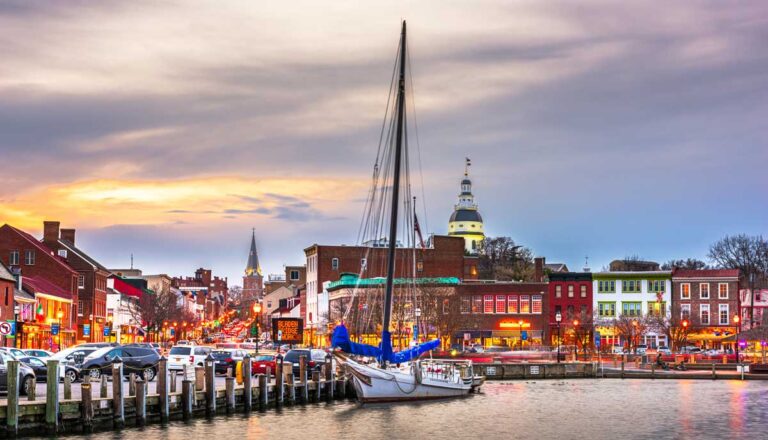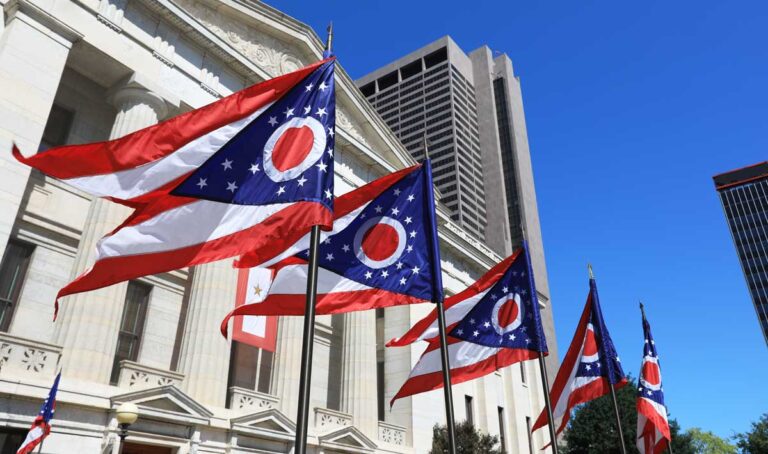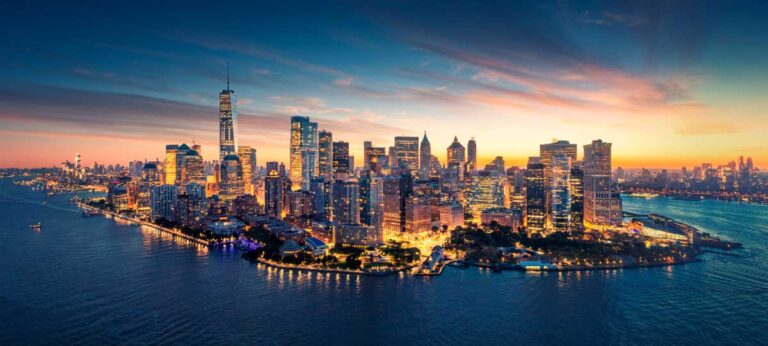What States Make Up The Midwest Region?
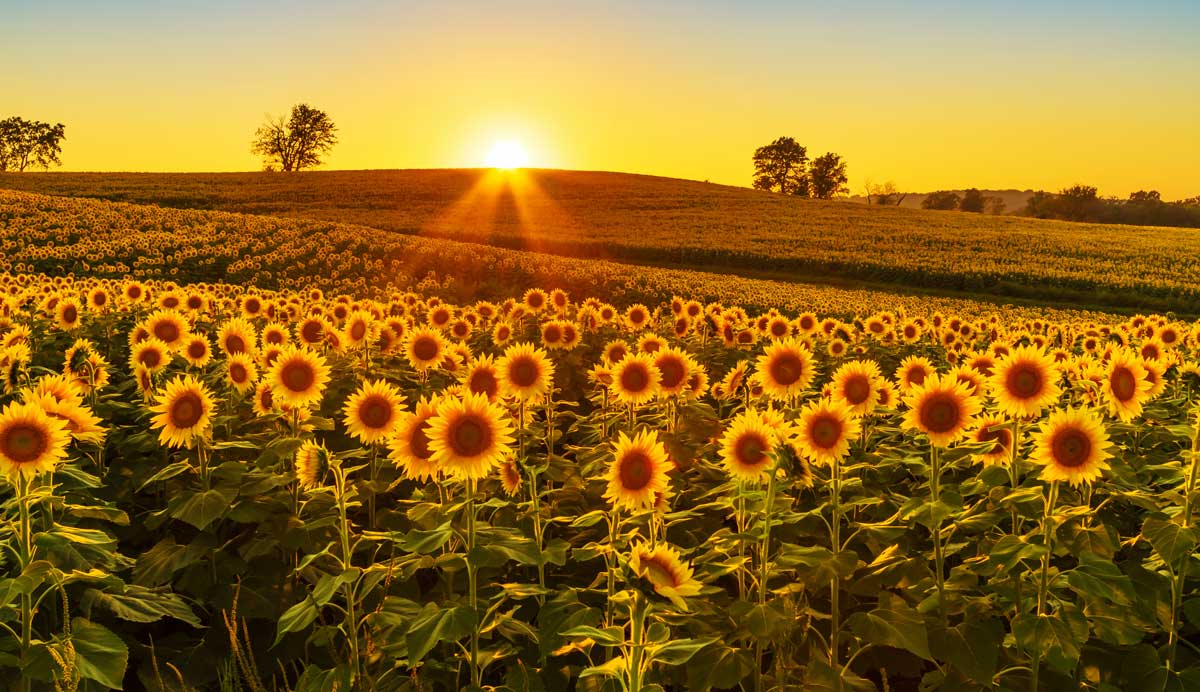
Considered one of the four regions of the US census bureau, the Midwest, or the Midwestern United States, is located in the northern central part of the country.
This populated area of the United States has a significant history and its location contributes to a lot of noteworthy moments that occurred over the course of history.
What states are the Midwest, exactly?
Contents
Advertising Disclosure: What States is a for profit reference website, supported by advertisements. Thank you for supporting our mission to make geography fun for all!
Which States Are the Midwest?
The Midwest, sometimes known as America’s heartland, is a region in the United States that’s made up of 12 states:
- Ohio
- Michigan
- Indiana
- Wisconsin
- Illinois
- Minnesota
- Iowa
- Missouri
- North Dakota
- South Dakota
- Nebraska
- Kansas
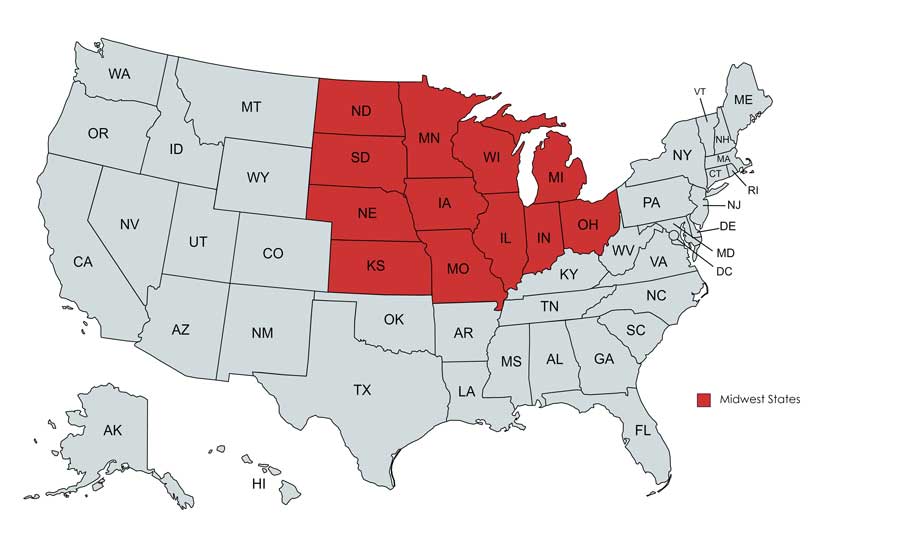
Where Is the Midwest Located?
The Midwest starts in east north central in Ohio and stretches to the west north central in Nebraska, Kansas, and North and South Dakota.
It’s located halfway between the Northeastern and Western United States, with Canada to the north and the Southern United States to the south.
The region encompasses little over 750,000 square miles of land and is home to more than 27 million people. It overlaps with several other regions of the United States, including several of the Great Lakes states, some of the Great Plains states in Tornado Alley, and a handful of states that are arguably part of the the Bible Belt (like Missouri).
Interesting Facts About the Midwest
The Midwest flaunts two major rivers: the Mississippi and Missouri rivers. The great lakes also happen to have some significance in some Midwestern states, touching six of them: Minnesota, Wisconsin, Illinois, Indiana, Michigan, and Ohio.
Because the Midwestern United States lacks seas, temperatures may be high, with year-to-year temperature swings of up to 100 degrees. Summers can be scorching hot, while winters can be bone-chillingly cold.
Tornado Alley has no well-defined limits, but the most powerful and frequent tornadoes are often seen in Texas, Oklahoma, Arkansas, and the Midwest states of Missouri and Iowa.
History of the Midwest
The history of the Midwest Region includes open plains, livestock, and pioneers.
Native Americans were the first to settle in the region. Archaeologists have, in fact, discovered relics dating back more than 1,000 years!
The Great Plains were home to the Sioux— the Dakota were another name for them. The Sioux Nation was made up of seven significant tribes, and they resided in South Dakota’s Black Hills (close to where you’ll find the Badlands area today).
Wisconsin, Iowa, Minnesota, and North Dakota were also home to Sioux towns. On the Great Plains, the Sioux hunted buffalo. When Spanish explorers arrived in the region, they started to hunt on horses.
Interesting Facts About the Midwest Region
- Until 1984, the United States Census Bureau referred to the present-day Midwest as the North Central Region. The Midwest is divided into two sections for official census purposes.
- The West North Central region includes the Dakotas, Nebraska, Kansas, Iowa, Missouri, and Minnesota. Wisconsin, Michigan, Illinois, Indiana, and Ohio make up the East North Central region.
- With huge populations of Germans, Swedes, and Norwegians arriving in the region in the 19th and 20th centuries, immigration has played a vital part in the Midwest’s expansion.
- Today, 7.3% of Midwest residents were born outside of the United States, and 11.7% speak a language other than English at home.
- Detroit, Minneapolis, St. Louis, Cincinnati, Cleveland, Kansas City, and Columbus are the most populated metropolitan regions in the Midwest.
- Residents of the Midwest, whether in cities and in rural locations, are completely aware of how unpredictable the weather can be.
- The top 10 cities in the United States when it comes to unpredictable weather are all in the Midwest, with Sioux Falls and Minneapolis at the top.
Fun Facts About the Great Plains
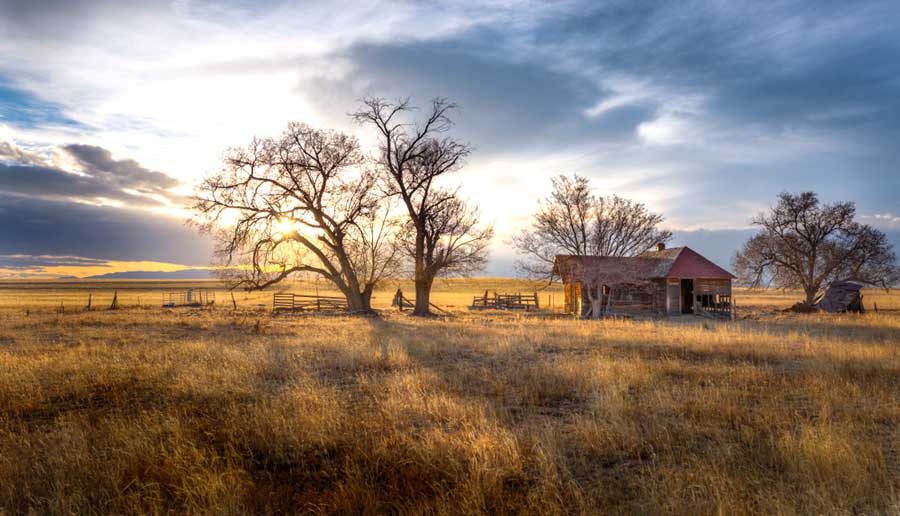
The Great Plains, which are generally flat plains and grasslands that encompass about 180 million acres in total, make up the Midwest.
The Midwest is a popular location for farming, outdoor enjoyment, and building because of its continuous low elevation.
Tornado Alley refers to a region of the Great Plains that has a greater tornado frequency than the rest of the United States. With 96 tornadoes on average every year, Kansas is second only to Illinois, Iowa, and Nebraska, which have between 51 and 66 tornadoes per year.
The lush land and wealth of natural resources like coal, limestone, oil, and iron ore propelled the region’s expansion in the next century after it was included in the 1803 Louisiana Purchase.
Prairie dogs, coyotes, and rattlesnakes, as well as pronghorn and American bison herds, call the Great Plains home. The Great Plains are known for cattle ranching and wind farms.
❓ Trivia Time: Which States are the Lower 48?
Midwest Tourist Attractions
The Midwest is a favorite destination for suburban families, with several well-known sites and tourist attractions.
Mount Rushmore is a national memorial in the Black Hills that features the faces of former presidents George Washington, Abraham Lincoln, Thomas Jefferson, and Theodore Roosevelt.
The Gateway Arch in Missouri is the world’s highest structure, towering over St. Louis. The Mall of America in Bloomington, Minnesota, features over 500 stores and is the third-largest in the United States, with over 40 million visitors per year.
❓ Trivia Time: Which state is home to the most National Parks?
Quick Facts About the Midwest
- Midwest Population: 68.32 Million as of 202, making up 20.8% of the U.S. Population
- Time Zone: Almost all use the Central Time Zone (CTZ) except Ohio and Indiana which use Eastern Time Zone (EST)
- Geographic Area: 1.888 million km²
- Major Midwestern Cities: Chicago, Indianapolis, Columbus, and Detroit
- Famous For: Mount Rushmore which is located in South Dakota and is one of the most famous landmarks in the U.S, The Gateway Arch in St. Louis, Missouri, Cave of the Mounds in Wisconsin, Rock and Roll hall of fame in Ohio.
- When to Visit the Midwest: The greatest time to visit the Midwest is from June through September. Summers in Indiana, Iowa, Ohio, and North Dakota are hot and humid, making for good driving conditions across the area. This is also when you can find open-air festivals and events like Twins Days in Ohio or state fairs that are famous in Indiana, Iowa, Ohio, and North Dakota.
- Abbreviations for the States in the Midwest: ND, SD, NE, KS, MO, IA, MN, WI, MI, IL, IN, OH
FAQs About the Midwest
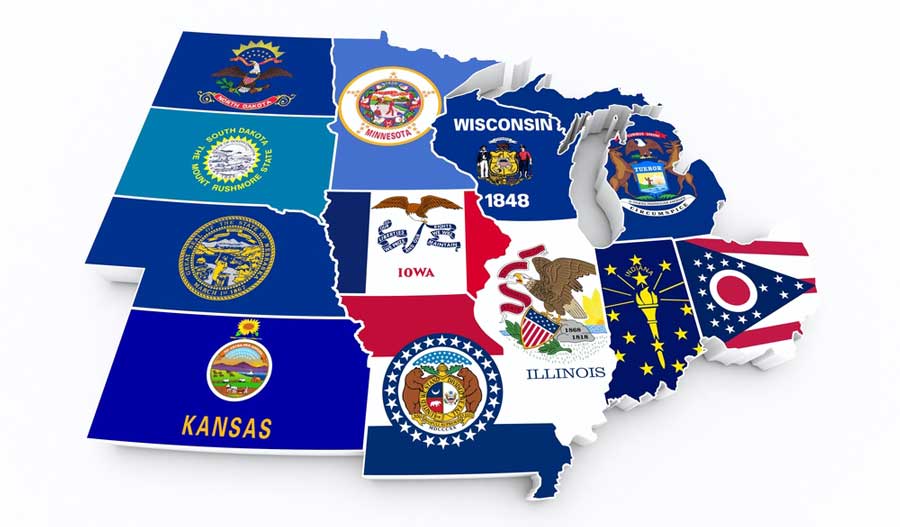
Which State Is The Largest In The Midwest?
Michigan is the largest state in the Midwest in terms of geographical area but not landmass. It stretches up to 96,713 square miles. However, water covers 40,175 square miles (104,052 square kilometers), or 41.5 percent of the state.
Which State Is The Smallest State In The Midwest?
Indiana is the smallest state in the Midwest. Indiana is the 38th largest state in the United States, with over 36,000 square miles. Ohio is the second smallest state in the Midwest.
Which State Is Considered The Best To Live In In The Midwest?
Definitely Minnesota. Minnesota’s recent surge in popularity comes from it being the 2nd best state to live in according to a report by the U.S. News and World Report.
Minnesota is second only to Washington, which is in first place for the second year in a row. Data from 71 criteria and eight categories are used to compile the yearly ranking.
Which State Is The Cheapest To Move To In The Midwest?
Missouri is considered the cheapest place to live in the Midwest and is also ranked the 4th cheapest state to move to in the United States. This is in terms of housing, mortgage payments, grocery prices, and the average cost of living.
***
So to recap: What states are the Midwest? It’s made up of 12 states, and they are Ohio, Michigan, Indiana, Wisconsin, Illinois, Minnesota, Iowa, Missouri, North Dakota, South Dakota, Nebraska, and Kansas.
They might all be in close geographical quarters, but they differ in culture and in history!
❓ Trivia Time: What States Are in The Northeast USA?

